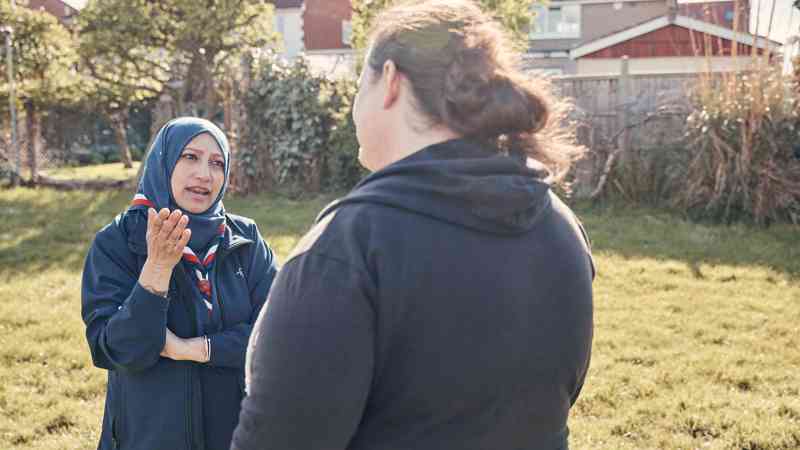Supporting families and young people from a military background
Discover tips for including families and young people from a military background.
Quick links
Supporting families and young people from a military background
A Squirrel volunteer talks about her experience of supporting and welcome young people from military families to get the best out of their Scouts journey.
Where's the Drey located?
They are a Sea Scout group located in an affluently diverse area between two cities. The leaders have admitted that their hut has some accessibility issues, as it's on the second floor of a building with no lift. However, they have access to a pontoon, and they take their Scouts – and Squirrels – on the water whenever they can. They also engage with other Scouts groups in the area and offer to take their kids out on the water whenever possible.
The Squirrel Leader says they're very proud of the work they've done to include families from a military background and support children with special educational needs and disabilities (SEND).
What are the challenges and opportunities?
They are in an area with a great number of military families who may have a transient life and may also have a parent deployed. They currently have three military children within the Squirrels Drey (two Squirrels and one young leader).
The group say: ‘We try to be active at events within the military bases so that those on the base are aware of the group.’
The group has a policy that if a member doesn’t consistently turn up, the spot goes to someone else. They make an exception for military families. Engaging with these families is important so if the children and young people get registered, they can continue Scouts in another group even if the family moves.
Regardless of their background, developing a rapport with the families helps to develop a good relationship with the Squirrels and enables them to make an even greater contribution to the young people's growth.

A really good relationship with the parents is essential as this is how you find out the needs of the families in your community
Squirrel Leader
Key steps:
- Get to know your community. Getting to know the families, the facilities and different backgrounds helps to develop programme and resources to meet children's needs.
- Be open and flexible in your choices. If an activity doesn’t work with the children in your group, you can always try another. Even better if you give children the option to choose, creating a truly youth-shaped programme.
- Don't be afraid to ask parents what they need. Try using the parent and carer conversation framework to structure your conversations.

Learn how a volunteer has worked in partnership with families from lower-income areas.

A Leader shares her experience of supporting children and adults with SEND.

A Squirrel Leader talks about the importance of having a diverse leadership team.